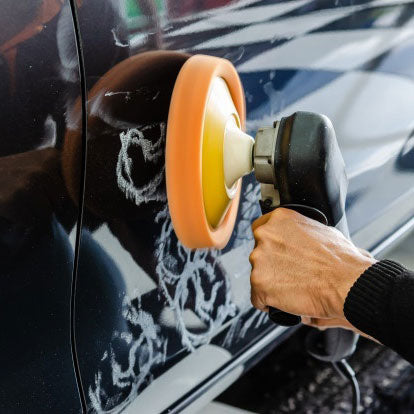In Australia, skin penetration procedures such as tattooing, body piercing, cosmetic tattooing, acupuncture, and other beauty treatments that involve breaking the skin are strictly regulated by local councils to protect public health and prevent the spread of infection. Businesses offering these services must comply with relevant health regulations under the Public Health Act and local council guidelines.
If you operate a studio or clinic that offers skin penetration services, it's essential to understand what local council environmental health officers look for during an inspection. Failing to meet these requirements can result in warnings, fines, or even closure of the business.
Here are the five key things I have found councils check during a health inspection and Ill hare with you how you can stay compliant and confident when the inspector comes knocking.
Cleanliness and Hygiene of the Premises

One of the first and most critical aspects councils assess is the overall cleanliness and hygiene of the studio. This includes both the visible tidiness and the hidden hygiene standards behind the scenes.
What Councils Look For:
- Floors, walls, and ceilings must be clean and in good repair, with no flaking paint, grime build-up, or water damage.
- Treatment areas should be uncluttered, easy to clean, and clearly separated from waiting areas, staff kitchens, and personal storage.
- All surfaces must be impervious and easy to sanitise, including benches, workstations, and chairs.
- Toilets and handwashing facilities must be fully stocked, clean, and accessible.
- Waste bins should be foot-operated, lined, and emptied regularly and clearly labelled.
How to Stay Compliant:
- Create and follow daily, weekly, and monthly cleaning schedules.
- Keep a cleaning logbook with staff initials, dates, and completed tasks.
- Use hospital-grade disinfectants and follow the manufacturer’s instructions for time and dilution.
- Regularly inspect the premises for any wear and tear that could compromise hygiene.
Infection Control Procedures

Infection control is at the heart of skin penetration safety. Councils closely monitor how your business prevents the spread of infection from client to client and from staff to client.
What Councils Look For:
- Handwashing practices and the availability of soap, single-use paper towels, and warm running water.
- Appropriate use of Personal Protective Equipment (PPE) such as gloves, face masks, aprons, and eye protection.
- Availability and correct use of antiseptics and skin disinfectants.
- Strict no re-use of single-use instruments, and proper cleaning, packaging, and sterilisation of reusable tools.
- Cross-contamination prevention e.g., using clean tweezers for each client, avoiding double-dipping, and sanitising between procedures.
How to Stay Compliant:
- Train all staff in Standard Precautions and the 5 Moments for Hand Hygiene. Some local councils require a certification in Infection Control:
HLTINF005 Maintain Infection Control Standards in Skin Penetration Settings is the best to go for. - Stock adequate PPE and have policies for when and how to use it.
- Set up a clean and dirty zone system to separate sterile items from contaminated ones. Have appropriate signage and instructions at each area.
- Ensure that all instruments are cleaned in three stages—wash, disinfect, sterilise.
- Use barrier protection on surfaces that are touched frequently during procedures (e.g., cling film on tattoo machines or trays, even lights and drink bottles you may touch during procedure).
Sterilisation and Equipment Maintenance

Sterilisation is crucial for preventing bloodborne infections such as Hepatitis B, Hepatitis C, and HIV. Councils will closely inspect how you manage your sterilisation equipment—usually autoclaves.
What Councils Look For:
- Autoclaves must be registered (where required), regularly serviced, and meet Australian Standards (AS/NZS 4187 or 4815).
- Evidence of validation and calibration.
- Detailed records of sterilisation cycles, including time, temperature, pressure, load contents, and operator initials.
- Proper cleaning and packaging of instruments before sterilisation.
- Storage of sterile items in a dust-free, clearly labelled, and dated environment.
How to Stay Compliant:
- Only allow trained staff to use and monitor the autoclave.
- Keep a Sterilisation Record Book or digital log, with records kept for a minimum of 12–24 months (depending on local council).
- Use indicator strips or pouches with each cycle to verify sterility.
- Have a preventative maintenance schedule for your autoclave with receipts or certificates from a qualified technician.
Record Keeping and Documentation

Councils expect that all procedures, cleaning routines, staff training, and incidents are well documented and up to date. Good records demonstrate that your business is professional, transparent, and committed to safety.
What Councils Look For:
- Client consent forms, medical disclosures, and pre/post-care instructions.
- Records of staff training in infection control, first aid, and procedure-specific techniques.
- Cleaning and maintenance logs, including dates and staff initials.
- Incident and injury reports, sharps injury logs, and procedures for exposure to blood or body fluids.
- Sterilisation records and validation reports.
How to Stay Compliant:
- Use pre-printed templates or digital forms for consistency.
- Store records in a secure location, but make them accessible for inspection.
- Regularly audit your paperwork to ensure all logs are filled in completely and honestly.
- Update your records following any changes in legislation, equipment, or training.
Waste Management and Sharps Disposal

Improper waste disposal can pose a serious health risk, not only to staff and clients but also to the broader community and waste handlers. Councils carefully assess how you store, handle, and dispose of waste, particularly sharps and biohazard materials.
What Councils Look For:
- Use of designated sharps containers that are puncture-proof, clearly labelled, and compliant with AS 4031.
- Proper segregation of waste—clinical waste, sharps, general waste, and recyclables.
- Contracts or invoices from a licensed waste disposal service for clinical waste and sharps collection.
- Accessible spill kits, and evidence that staff know how to use them.
- Storage of waste in areas not accessible to the public and collected frequently.
How to Stay Compliant:
- Place sharps containers within arm’s reach of the procedure area.
- Replace sharps bins when they reach ¾ full never overfill.
- Display clear signage near waste areas outlining segregation rules.
- Train all staff in your waste management procedures and conduct mock spill response drills.

Bonus Tip: How to Prepare for a Council Inspection
Health inspections can be announced or unannounced, so being prepared at all times is essential. Here are a few strategies to help:
- Designate a compliance officer or senior staff member who’s responsible for hygiene, documentation, and readiness.
- Conduct internal mock inspections using your council’s checklist or Australian Guidelines for Skin Penetration.
- Display public health signage (e.g., handwashing posters, PPE use, sharps disposal).
- Encourage a culture of responsibility where every staff member understands their role in infection control.
- Stay up to date with training and legislation changes, and update your practices accordingly.
While council inspections can feel intimidating, they are a vital part of keeping the public safe and maintaining trust in the skin penetration industry. Think of them not as hurdles, but as opportunities to improve, refine, and demonstrate your commitment to best practice.
By staying on top of cleanliness, infection control, sterilisation, documentation, and waste management, you not only pass inspections with flying colours but you also build a stronger.
- Jaz Anna



